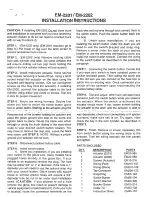
I01�High-voltage�Components
5.�High-voltage�Battery�Unit
78
Bore�hole�for�potential�compensation�screw
Index
Explanation
1
Frame�(Drive�module)
2
New�bore�hole�for�potential�compensation�screw�in�the�event�of�a�repair
3
Housing�of�high-voltage�battery�unit
4
Original�bore�hole�for�potential�compensation�screw�ex�works
Similar�to�vehicles�with�a�frame�design,�the�Life-Drive�concept�is�made�up�of�two�independent�modules
separated�horizontally.�The�"Life"�module�consists�mainly�of�a�high-strength�and�very�lightweight
passenger�cell�made�of�carbon�reinforced�plastic.�The�"Drive"�module,�the�chassis,�forms�the
stable�base,�in�which�the�high-voltage�battery�unit�is�integrated.�Crash-active�structures�made�from
aluminium�at�the�front�end�and�rear�end�of�the�Drive�module�ensure�additional�safety�in�the�event�of
a�head-on�and�rear-end�collision.�The�high-voltage�battery�unit�is�located�in�the�vehicle�underbody
for�the�best�possible�protection�as�a�vehicle�suffers�the�least�amount�of�deformation�in�this�area�in
the�event�of�a�crash.�In�the�event�of�a�side�collision�the�high-voltage�battery�unit�also�benefits�from
the�crash�properties�of�the�Life�module,�as�the�entire�energy�is�collected�here�and�does�not�advance
as�far�as�the�energy�storage�device.�Overall,�the�high-strength�carbon�passenger�compartment�in
conjunction�with�the�intelligent�force�distribution�in�the�LifeDrive�module�creates�the�prerequisite�for
optimal�occupant�safety.
Three�labels�are�attached�at�the�high-voltage�battery�unit�of�the�I01:�one�type�plate�and�two�warning
stickers.�The�type�plate�provides�logistical�information�(e.g.�part�number)�and�the�key�technical�data
(e.g.�nominal�voltage).�The�two�warning�stickers�draw�attention�to�the�lithium-ion�technology�and�the
high�electrical�voltage�used�in�the�high-voltage�battery�unit�and�alert�people�to�associated�possible
dangers.�The�following�graphic�shows�where�the�three�labels�are�located�at�the�high-voltage�battery
unit.
















































